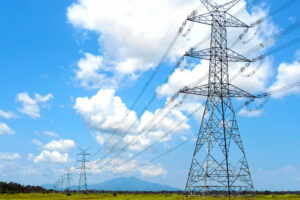Effecting a Civil-Maritime Regime in the Philippine Archipelago

The late 2010s were marked by Southeast Asian states’ efforts to build and develop their nascent coast guards and other maritime law enforcement agencies (MLEAs). These countries see the need to protect and manage their maritime jurisdiction as well as defend their offshore claims and secure their maritime interests and resources. For these littoral states, the coast guard is seen as the primary agency for effecting a civil-maritime regime in their respective territorial and contiguous waters, and Exclusive Economic Zones (EEZs).
NAVY OR COAST GUARD?In the last century, Southeast Asian countries have protected their maritime domain by building and deploying their modern navies. Navies represent a strong expression of raw state power and control over the sea aimed at conveying to other states that the disputed territory is a matter of national security and a clear signal that a state is willing to use force against other states. The navy’s task is primarily naval warfighting and deterrence against maritime aggression for national defense. Naval vessels play a significant role in a state’s projection of its maritime power. They are designed and built for high technology warfare and high intensity maritime operations.
The coast guard is different from the navy since it is responsible for law enforcement and safety and security in waters under national jurisdiction. Coast guard activities primarily involve a wide range of routine and peacetime maritime security regimes such as safety of seafarers, and the protections of vessels, ports, the marine environment, and offshore installations, and the provision of humanitarian and disaster assistance.
It is a civilian agency optimized for low-intensity maritime operations, tasked primarily with constabulary operations based on a principle of reasonable use of force that requires skills and training in the effective enforcement of civil regulatory frameworks at sea. It is seen as the civilian face of state power in maritime areas whose operation is conducted under a domestic civilian jurisdiction, subject to domestic laws and regulation, and designed for effecting a civil-maritime security governance in Southeast Asia.
EFFECTING A CIVIL MARITIME-SECURITY REGIMESoutheast Asian states have recently relied on their newly established coast guards rather than on their long-established navies to manage their maritime domains and, in certain cases, assert their sovereign rights over disputed waters against other states. This is only natural since Southeast Asia is the site of the world’s two largest archipelagic states, Indonesia and the Philippines. The subregion is crisscrossed by several important bodies of water such as the South China Sea and the Malacca Straits.
The littoral states have long recognized the need to establish civil-maritime security governance to manage the dramatic increase in maritime related activities and to address non-traditional security challenges at sea.
The emergence of a vibrant and integrated regional economy, the increase in trade, and the consequent boom in shipping demand have led to a surge in maritime commerce and trade. An externality to this development is the proliferation of non-traditional security challenges in the waters of Southeast Asia, such as illegal fishing that leads to marine environmental destruction, piracy, terrorism, trade in illicit drugs, pollution incidents, and human trafficking.
As one of the two Southeast Asian archipelagic states, the Philippines has designated the Philippine Coast Guard (PCG) as the lead agency in instituting a civil maritime-security regime over its 7,000 islands, which constitute over a tenth of the global coastline. This civilian agency has diverse tasks ranging from ensuring maritime safety, security, and law and good order to deploying its white hulls in efforts to protect and safeguard the Philippines’ claim in the South China Sea. It is an armed and uniformed civilian service tasked primarily with enforcing national laws, ensuring maritime safety and security, and protecting the marine environment — all missions that are similar to a typical coast guard.
The PCG, given its vast powers and unique characteristics, can transition seamlessly across defense-support and policing activities while keeping its universal treatment as a humanitarian service agency.
During President Gloria Macapagal Arroyo’s term, the PCG played an important role in assisting her administration in realizing the vision of a “Strong Republic” linked by the Philippine Nautical Highway System, in providing assistance to victims of several maritime accidents, and managing the country’s worst oil spill disaster off Guimaras Island in July 2006. At the end of her nine-year term, the Philippine Congress passed the PCG Law of 2009 which clearly and legally stipulated that this agency would remain under the Department of Transportation and Communication’s permanent supervision.
In the 2020s, the PCG is the Philippine government’s primary enforcer of the country’s maritime rights and interests in the country’s EEZ, a role that the Philippine Navy (PN) traditionally held until the Scarborough stand-off of 2012. The Philippine government and its security partners, such as Australia and Japan, have invested in the development of the PCG’s capabilities in recent years.
Still plagued with challenges such as lack of technology, limited manpower, the absence of shore infrastructure to support its operations at sea, and its lingering inter-service dynamics with the PN, the PCG nevertheless assumes an essential role in enforcing and strengthening the country’s civil maritime security.
Dr. Renato De Castro is a Trustee and Convenor of the National Security and East Asian Affairs Program of the Stratbase ADR Institute.




